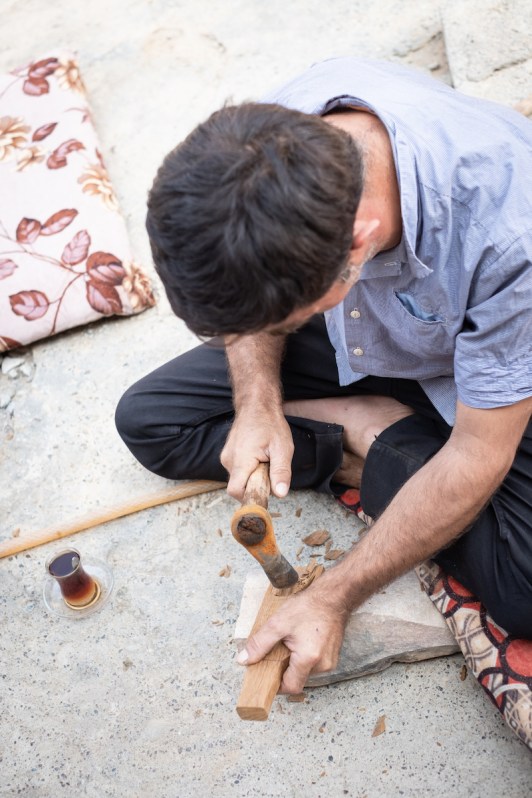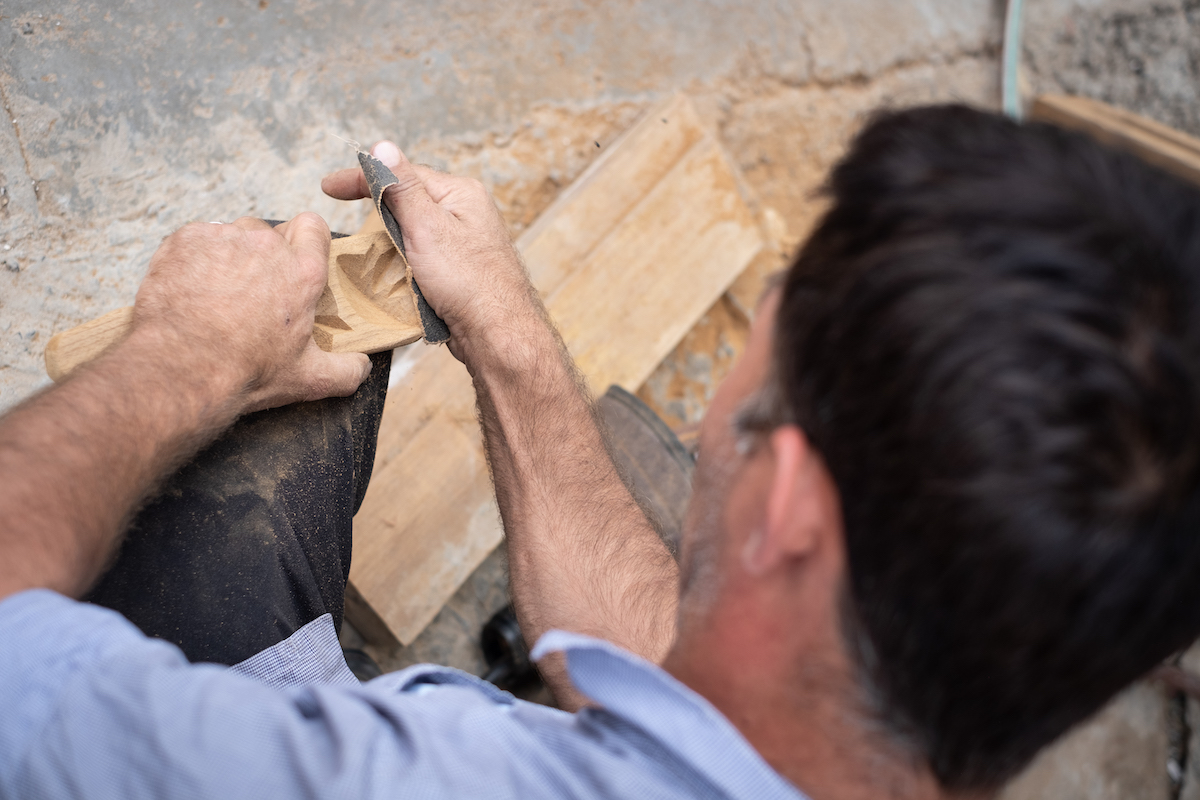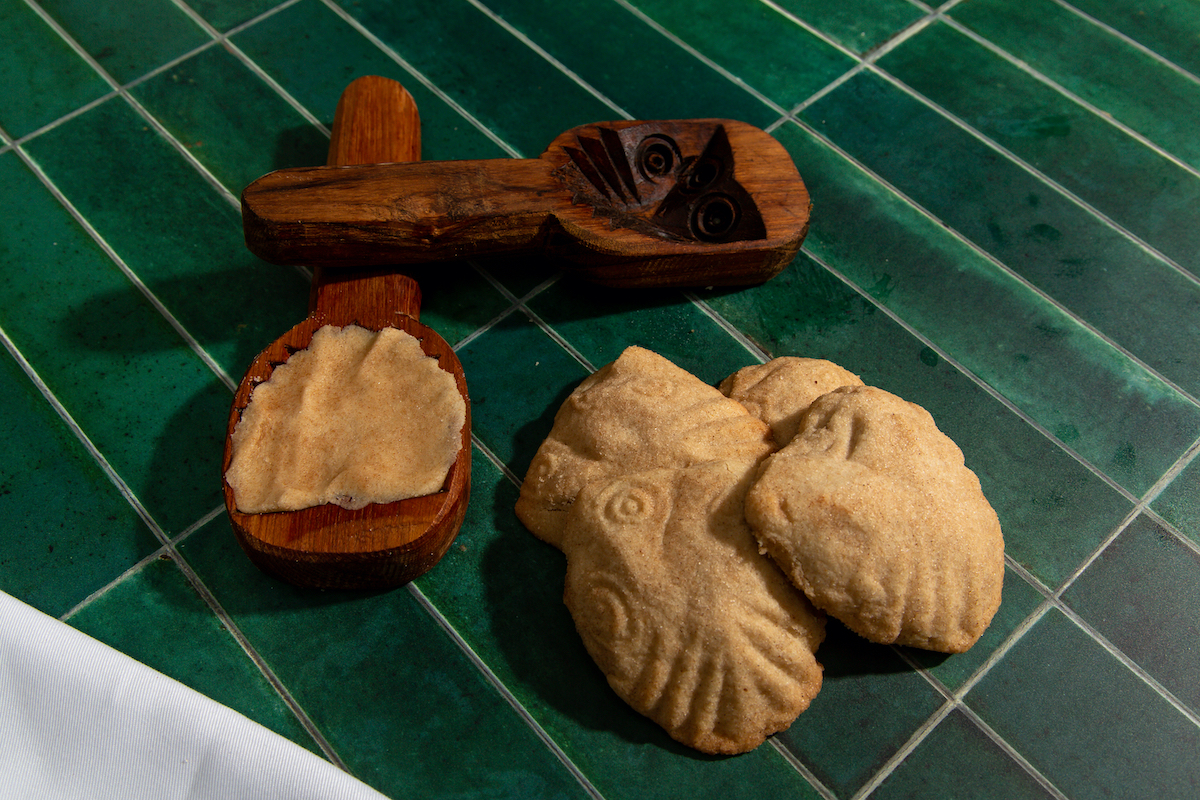The sound of children swirls around us as we sit in Hadi’s home, cross-legged on cushions on the floor. A few of Hadi’s children sit nearby to listen to their dad talk about his work and his life. But most are shy—they hold back and take turns peeking around the doorframe, curious.
Hadi speaks in the same way he wields his carpentry tools—quickly and with confidence. Just as Hadi’s kids follow him to his shop to watch him work, Hadi spent time with his father, an excellent woodworker, from the young age of nine and a half. He loved to watch his father work and started practicing on scraps of wood as soon as he was allowed. The first thing he carved was a small sugar spoon. The next was a large wooden mixing spoon.
By the age of 13, Hadi had learned enough to join his father in the trade.

Hadi loves his profession. He can carve anything out of wood, he tells us, but he most enjoys creating useful items, like rolling pins used to make traditional flatbread at home, and long wooden paddles used in commercial bread ovens. In a candid moment, Hadi tells us he loves to make what sells well. It makes sense; woodworking isn’t a hobby for Hadi, this is how he takes care of his family.
Now outside, in an open area at the front of Hadi’s home, we continue to talk as we watch Hadi transform blocks of wood into decorative cookie molds. Hadi sits cross-legged on the ground, picks up his tools, and sends thick chips of wood flying. He works in the traditional way, on the ground, with a flat stone steadying his work instead of a western-style workbench.
Hadi uses an adze he made himself to roughly shape a short length of board, giving it a handle. You can’t buy the tools he uses in the market, he tells us. He creates what he needs with a forge and iron. Next, Hadi refines the shape of his wooden mold, then carves out the decorative depressions used for shaping cookies. The final shape is sanded to smooth and refine its patterns. The process of carving cookie molds is both straightforward and fascinating.
Between sips of tea, we ask Hadi what keeps him at this work. He’s good at it, he says, matter of factly. He can do it anywhere, especially at home. He doesn’t need complicated machinery or fancy equipment to make his wares. Woodwork allows Hadi to take care of his family, is something he loves to do, and something he’s good at.

Some of his neighbors have stopped using wooden molds to make their cookies. They’ve decided that cheap plastic imports will do the job. And they do until they break. Hadi is passing his skills on to his children, so they can continue to make traditional cookie molds. It’s unfortunate that some in his community won’t have a hand-made mold passed down to them to learn with.
But you can. Hadi’s beautiful, hand-carved cookie molds are available in our shop. Each is unique, and perfect for forming sweet dough into the perfect treat to have with tea or coffee.
While you experiment with different recipes to use with your mold, try out Katherine J. Slevin’s LA FOI (“FAITH”) holiday cookies, shown below. Recipe here.



